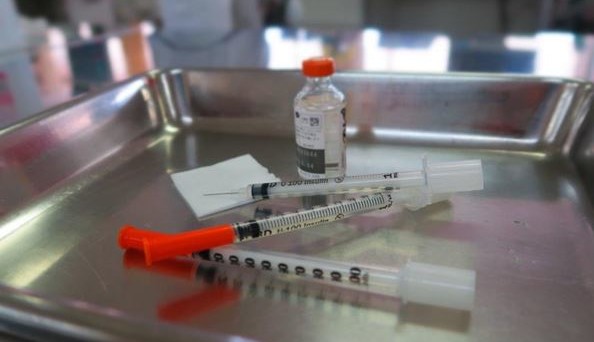
What is diabetes mellitus?
Diabetes is a chronic hyperglycemic state that develops when insulin secretion, which is a pancreatic endocrine function, becomes insufficient. Diabetes can be classified into Type I diabetes, in which insulin secretion function is lost, and Type II diabetes, in which insulin cannot be secreted sufficiently to control blood glucose levels in correspondence with calorie intake.
The 2015 surveillance report of the International Diabetes Federation, the so-called diabetes ATLAS 2015, states that there are more than 400 million diabetes patients in the world and predicts that the number will reach 600 million by 2040.
Since excessive calorie intake was thought to be the cause of diabetes, it was once called the ‘rich man’s disease’. However, many cases of diabetes now develop in low-income countries, where the rate of increase greatly exceeds that in high-income countries.
So, is there a relationship between income and onset of diabetes? The answer is believed to lie in the type of diet. That is, when people do not have access to a properly balanced diet, those people mainly take meals that are rich in carbohydrates, which are believed to lead to insulin resistance due to high glucose load.
Why is diabetes awareness important?
Diabetes manifests various, rather indefinite, clinical symptoms that are caused by elevated blood glucose.
Diabetes manifests various, rather indefinite, clinical symptoms that are caused by elevated blood glucose, including excessive thirst (polydipsia), and excessive passage of urine (polyuria). Since these go unnoticed, the disease progresses and various complications develop.
It is often only then that diabetes is first recognized. It can be thought that, like high blood pressure, diabetes should be called a ‘silent killer’.
The complications of diabetes are due to the damage caused to all organs and include nephropathy, peripheral neuropathy, cerebrovascular disease, and coronary artery disease.
These complications not only reduce the quality of life but also require enormous medical expenses for treatment. Diabetes is a disease that clearly needs to be prevented.
What is the problem of hyperglycemia?
The essence of diabetes is a state of persistent high blood glucose. In order to maintain brain cell function, humans have biological defense mechanisms that maintain the blood glucose level under invasive stress.
In order to maintain brain cell function, humans have biological defense mechanisms that maintain the blood glucose level under invasive stress.
One such mechanism is secretion of stress hormones, the main ones being cortisol and catecholamine. Both of these hormones promote glyconeogenesis in the liver in order to raise the blood sugar level.
In addition, steroids are often used in treatment of shock, vascular permeability, and inflammation, but they can lead to a high serum blood glucose level.
If hyperglycemia (high blood sugar) persists, proteins and glucose in the blood undergo a concentration-dependent chemical reaction, and various compounds are produced in the blood.
These substances are known as advanced glycation endproducts (AGEs). HbA1C and glycohemoglobin are common AGEs. HbA1C is an important biomarker used for diagnosis of diabetes and assessment of compliance with treatment.
In vivo, AGEs bind to receptors for AGEs (RAGE) expressed on cell surfaces. Following binding to RAGE, signal transduction is carried out to the cytoplasm, leading finally to production of reactive oxygen species (ROS).
These ROS injure cells, resulting in organ damage. RAGE is known to be a multi-ligand receptor, and it has become clear that it also binds HMGB-1, which is one of the DAMPs that are produced in sepsis.
Thus, it is thought that cell damage occurs when there is a persistent increase in hyperglycemia-induced production of AGEs.
Regarding management of critically ill patients in intensive care units, since the first report by van den Bergh et al. in 2001, it has been suggested that strict management of blood glucose levels might improve the prognosis of critically ill patients.
Even SSCG 2012, a sepsis treatment guideline, recommends managing blood glucose level at 150-180 mg/dl.
Future challenges of blood glucose control – an artificial pancreas
Sliding scale insulin administration and continuous insulin administration are being used as methods of glycemic control for critically ill patients in intensive care units (ICUs). Despite the fact that frequent blood sampling can be done in an ICU, the incidence of hypoglycemia (low blood sugar) is high.
Work is now progressing on the development of an artificial pancreas with the goals of preventing hypoglycemia and achieving strict control of blood glucose levels.
Work is now progressing on the development of an artificial pancreas with the goals of preventing hypoglycemia and achieving strict control of blood glucose levels.
The first to be used in the clinical field was a large-scale device that could be used only at the bedside. Downsizing to a portable size is being carried out by miniaturization of the blood glucose level sensor and pump.
Although there are problems with long-term use of these devices due to subcutaneous implantation of sensors in the body, it is expected that use of portable artificial pancreases will become common within ten years.
We hope that the development of these devices will contribute to improvement in the prognosis of critically ill patients with a potential hyperglycemic state.
Comments